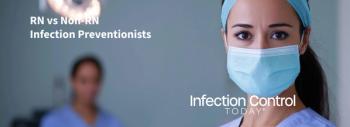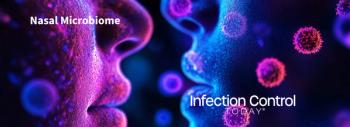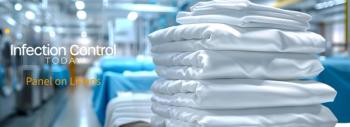
Hand Hygiene Push Drives Down C difficile at ICU Rehab: Automated Monitoring May Push It Further
A multifaceted infection-prevention push at a tertiary rehab ICU in the Upper Midwest reversed a rise in C difficile, lifting hand-hygiene adherence from 69% to 91% and cutting the C. diff standardized infection ratio from 1.6 to 0.4 over six months, researchers reported at IDWeek 2025 in Atlanta.
A tertiary-care intensive care unit (ICU) rehabilitation center serving the upper Midwest reported that a back-to-basics hand-hygiene campaign sharply improved compliance and cut its Clostridioides difficile infection (CDI) burden, while a companion-look at an automated system at a peer institution suggests there may be even more room to gain.
Presenting author Ashlesha Kaushik, MD, MS (with colleagues from UnityPoint Health, University of Iowa, and Harvard Medical School) described a pragmatic quality-improvement bundle launched after local CDI rose despite CDC-aligned diagnostics and antimicrobial stewardship.
What They Did
From October 1, 2023, to March 31, 2024, (P2), the team layered multiple interventions onto routine stewardship and contact precautions and compared outcomes with April 1 to September 30, 2023 (P1):
- Real-time, manual auditing of hand-hygiene at room entry/exit and before/after patient/environmental contact.
- Frequent provider coaching and unit huddles, with a nursing education focus.
- Visual cues and reminders in staff lounges, patient rooms, and nursing stations.
- Tracking soap vs sanitizer use to reinforce soap-and-water for spore risk.
They also conducted a small, cross-system comparison with Spaulding Rehabilitation Center (Harvard Medical School, Boston), which uses automated hand-hygiene monitoring (BioVigil) that actively signals and records improper hygiene.
What They Found
The local, manual program delivered rapid behavior change:
Overall hand-hygiene adherence jumped from 69% (191/277) in P1 to 91% (463/510) in P2 (P < .0001).
Physicians: 70% → 89% (P < .05)
Nurses: 71% → 93% (P < .001)
Advanced practice providers: 69% → 88% (P < .05)
Ancillary staff: 61% → 87% (P < .01)
Soap use rose from 43% → 74% (P < .05).
The facility’s CDI Standardized Infection Ratio (SIR) fell from 1.6 → 0.4 (P < .05).
In the automated-monitoring site, overall compliance averaged 97% during the same interval and the CDI SIR was 0, compared with 91% and 0.4 at the manual-auditing site.
Why It Matters for Infection Prevention and Control (IPC)
The project reinforces a core IPC principle: Sustained, observed practice change reduces CDI, even in high-risk rehabilitation populations. Importantly, the cross-system look hints that automated hand-hygiene systems, which provide immediate feedback and continuous data, may help close the final compliance gap and translate into still lower CDI.
Takeaways for Programs
- Pair visible leadership, coaching at the elbow, and simple cues with routine audits to move compliance quickly.
- Track soap utilization as a practical reinforcement metric for spore-risk scenarios.
- Consider automated monitoring where feasible; plan a cost–benefit evaluation that includes avoided CDI events, staff time saved on auditing, and culture gains from real-time feedback.
Conclusion: The center’s multi-pronged hand-hygiene campaign improved compliance across all roles and reduced CDI. Early signals from an automated system suggest the ceiling for performance and prevention may be higher still. Next steps include maintaining audits and education while formally assessing the applicability and return on investment of automation.
Newsletter
Stay prepared and protected with Infection Control Today's newsletter, delivering essential updates, best practices, and expert insights for infection preventionists.






